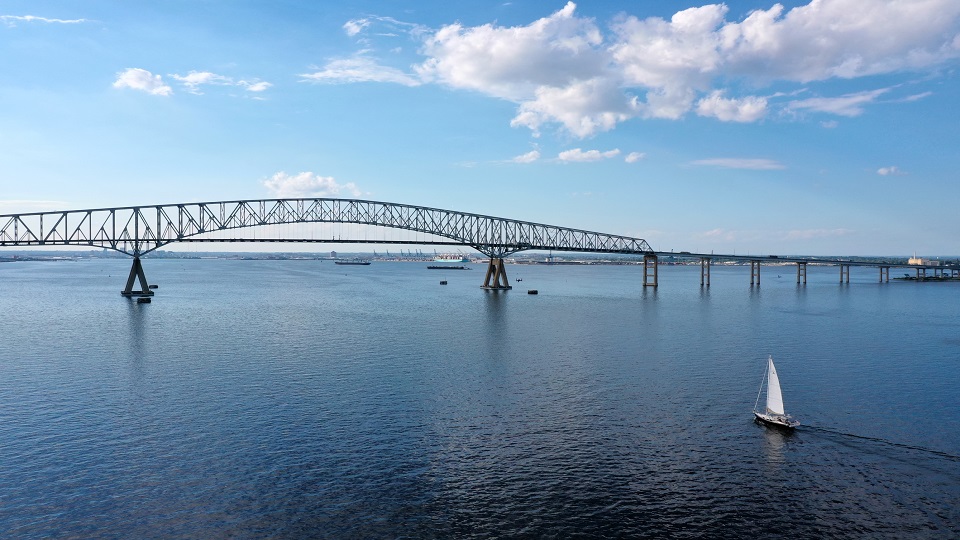The cause was Singapore-flagged container ship, the Dali, which veered off course, colliding with one of the bridge’s supports, or piers. As the 300 metre-long vessel slammed into the structure, leading to what’s known as a progressive collapse, where a domino effect leads to the entire structure failing. The bridge, built more than 45 years ago, crashed down into the frigid water at 1:28am eastern standard time (5:28 UTC).
But how could one ship bring down this 366m (1,200 ft) structure within seconds of the collision?
Engineers classify this type of bridge failure as a progressive collapse. This involves the failure of a single element, like the pier, which triggers a domino effect.
This leads to the sequential failure of other connected components, such as the metallic truss and the bridge’s deck. This type of collapse can have catastrophic consequences in terms of the risk to human life, as well as to the economy of an area and the local environment.
Although it’s impossible to account for every scenario, bridges can be built with inherent features that enhance their resistance to progressive collapse. Typically, bridges can withstand some degree of damage to a pier or part of the superstructure. The bridge deck can even remain safe for vehicles depending on the circumstances.
However, in the case of the Baltimore bridge collapse, the metallic truss was designed as one continuous system. The space between each support, or pier, is known as the truss span. The collapse of one of the piers effectively doubled the truss span to the next support. This dramatic increase in span exerted a much larger force on the remaining truss structure.
While continuous truss systems are favoured because they can redistribute weight in the event of damage, in this case, the remaining truss elements couldn’t withstand all that extra force after the pier failed.
This resulted in the complete collapse of the truss section above the damaged pier. The collapse didn’t stop there, however. Due to the interconnected nature of the trusses, the remaining section was initially pulled upwards. The sudden release of this tension created a powerful dynamic effect, ultimately causing the entire bridge to collapse.
Rare event
It’s certainly not unknown for ships to strike bridge supports. On May 9, 1980, a strikingly similar event took place when a freighter collided with a support pier of the Sunshine Skyway Bridge in Tampa Bay, Florida. As a result, the bridge failed over a similar distance as the Baltimore collapse.
But while bridge designers are acutely aware of the potential for collisions, these are – at the same time – rather rare events. The impact forces on a support pier are also highly variable. A higher speed or heavier ship will significantly increase the force on the pier. And higher vessel traffic in the water boosts the probability of a collision.
Continues…

For the full article by Dr Mohamed Shaheen visit The Conversation.
